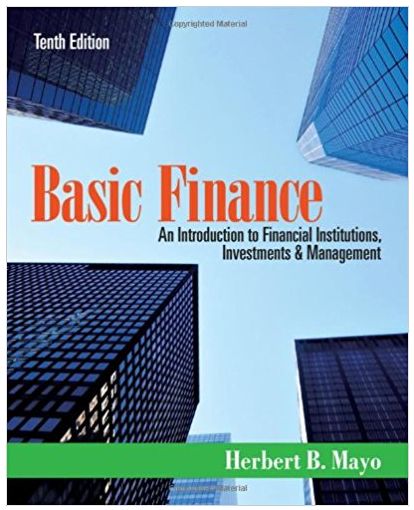Question
Suppose a beverage company is considering adding a new product line. Currently the company sells apple juice and they are considering selling a fruit drink.
Suppose a beverage company is considering adding a new product line. Currently the company sells apple juice and they are considering selling a fruit drink. The fruit drink will have a selling price of $1.29 per jar. The plant has excess capacity in a fully depreciated building to process the fruit drink. The fruit drink will be discontinued in four years. The new equipment is depreciated to zero using straight line depreciation. The new fruit drink requires an increase in working capital of $15,000 and $5,000 of this increase is offset with accounts payable. Projected sales are 60,000 jars of fruit drink the first year, with a 7 percent growth for the following years. Variable costs are 16% of total revenues and fixed costs are $10,000 each year. The new equipment costs $65,000 and has a salvage value of $5,000. The corporate tax rate is 25 percent and the company currently has 10,000 shares of stock outstanding at a current price of $11.50. The company also has 500 bonds outstanding, with a current price of $995. The bonds pay interest annually at the coupon rate is 2.5%. The bonds have a par value of $1,000 and will mature in twenty years. Even though the company has stock outstanding it is not publicly traded. Therefore, there is no publicly available financial information. However, management believes that given the industry they are in the most reasonable comparable publicly traded company is Cott Corporation (ticker symble is COT). In addition, management believes the S&P 500 is a reasonable proxy for the market portfolio. Therefore, the cost of equity is calculated using the beta from COT and the market risk premium based on the S&P 500 annual expected rate of return. (We calculated a monthly expected return for the market in the return exercise. You can simply multiply that rate by 12 for an expected annual rate on the market.) The WACC is then calculated using this information and the other information provided above. Clearly show all your calculations and sources for all parameter estimates used in the WACC.
Find:
Economic life of project in years.
Price of New Equipment
Fixed Costs Salvage value of New Equipment
Effect on NWC:
First Year Revenues
Variable Costs
Marginal Tax Rate
Growth Rate
WACC
.
Step by Step Solution
There are 3 Steps involved in it
Step: 1

Get Instant Access to Expert-Tailored Solutions
See step-by-step solutions with expert insights and AI powered tools for academic success
Step: 2

Step: 3

Ace Your Homework with AI
Get the answers you need in no time with our AI-driven, step-by-step assistance
Get Started


